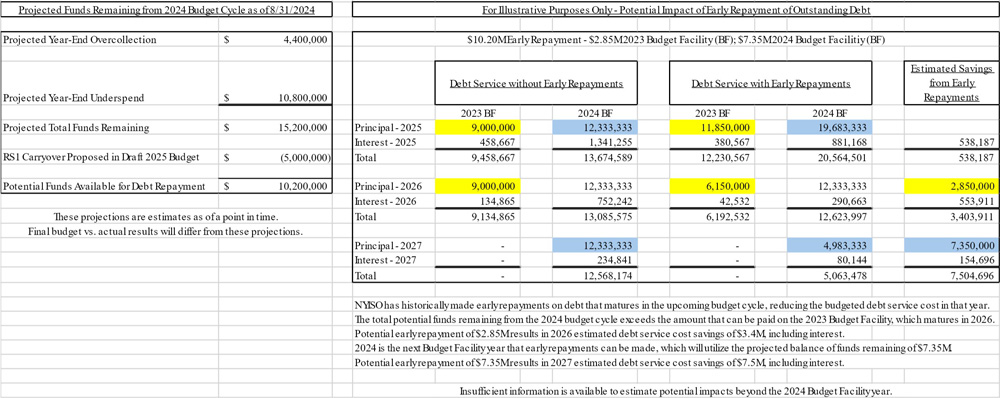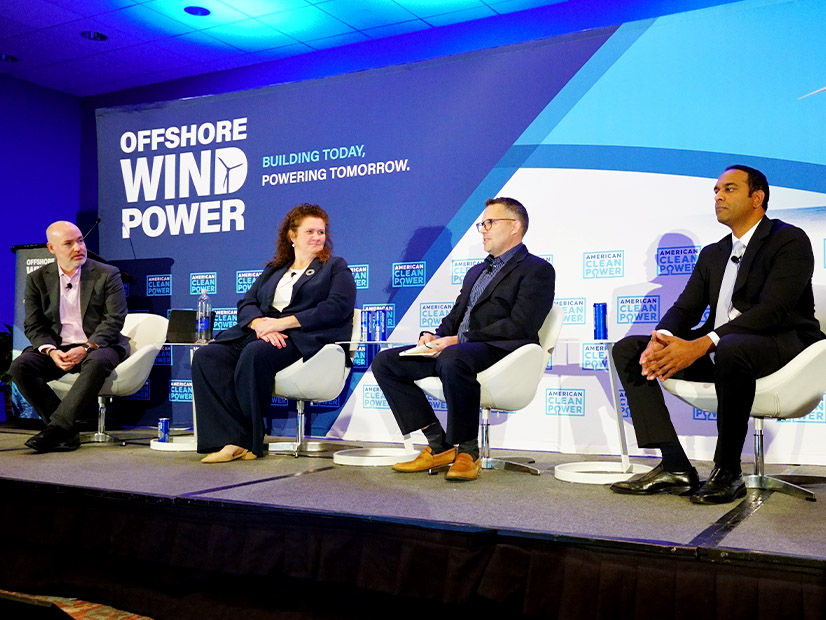A common refrain at FERC’s technical conference on the co-location of data centers held Nov. 1 was that the issue is just part of the broader problem of how to meet growing demand as older power plants retire and new ones are often delayed from coming online (AD24-11).
While many speakers made that argument, co-location itself could either help or hinder the industry’s efforts to ensure resource adequacy.
Chair Willie Phillips opened the conference by laying out how ensuring data centers are built in the U.S. is a major policy priority, alongside reshoring manufacturing.
“In my opinion, data centers, artificial intelligence [and], indeed, the full panoply of information-related technologies that are transforming the world are national resources with generational significance and vast national security and national economic consequences,” Phillips said. “They belong in the United States, and I believe that the federal government, including this agency, should be doing the very best it can to nurture and foster their development.”
Large data centers are willing and able to pay for the new capacity needed to integrate them reliably, he added. The sector could help anchor the infrastructure that the grid needs to maintain reliability, he argued.
But they are coming online on a grid with a shrinking reserve margin, with Commissioner Mark Christie noting that PJM has warned it could be short on supply by 2030.
“One of the big issues here, of course, is resource adequacy,” Christie said. “And one of the questions to be asked is, if you’re taking dispatchable resources — and when we talk nukes, we clearly are talking dispatchable resources — if you’re taking them out of the supply stack, what does that do to resource adequacy? That’s a huge issue that needs to be explored.”
Another issue is fairness to consumers, such as whether they will pay the non-bypassable charges all retail customers face if they are behind the meter at a nuclear plant, Christie said.
Pulling resources off the generation stack to serve data center load can have major cost impacts on the rest of the market, Maryland Sen. Katie Fry Hester (D) said. She quoted an analysis from PJM’s Independent Market Monitor estimating the cost of redirecting 1,000 MW from the Calvert Cliffs plant to serve a data center.
“They found that removing 1,000 MW of power from Calvert Cliffs, which was their approximation for a co-located data center, would increase the cost to Maryland in the 2025/26 [capacity auction] by $332 million,” Hester said. “I mean, that is a shocking number. And when the companies sit up here and say they’re paying their fair share, they may be paying for their immediate energies, but they’re not taking into account what it’s going to cost us to build the transmission for everybody else who’s no longer served by this power.”
Google: Speed to Market the Main Reason for Co-location
Google is not trying to avoid the costs of plugging into the grid with its exploration of co-location deals, said Brian George, the company’s U.S. federal lead on global energy market development.
“Co-location in the context that we’re talking about right now is really just a response to a market inadequacy, right?” George said. “We’re trying to figure out how we can get new loads onto the system in a way that meets our growth objectives. And so, I think that is important because it’s driven by the need to access the market.”
Google is not trying to avoid transmission and distribution costs by locating data centers behind the meter at power plants, he added.
“It is really kind of our preference to see the grid planned in a way that meets our needs, in collaboration with our utility partners, with our RTO partners; that it’s baked into forecasts. We’re sending resource adequacy signals,” George said. “That is where we want to go.”
Constellation Energy, the owner of Calvert Cliffs and the largest fleet of nuclear plants in the U.S., sees the growth in data centers and co-location as a way to ensure those assets stay profitable and producing power for decades, said Mason Emnett, senior vice president for public policy. It was only recently that nuclear plants were starting to retire because of low wholesale power prices.
“That led to a number of state programs and then ultimately a federal program that will be rolling off right as 40% of our fleet is turning over their 20-year licenses,” Emnett said. “So, from our perspective, the opportunity to serve this critically important load creates a long-term commercial pathway to relicensing.”
The kind of long-term deals that data center clients are interested in could help provide the financial backing to eventually add new nuclear plants to the grid, he added.
Constellation wants to serve more customers through traditional power purchase agreements as well, and Emnett said co-located load should pay its fair share.
“What does ‘fair’ mean for a load that has no ability to pull power from the grid?” he said. “It’s not gross load. … We can have a conversation about that, but when you have litigation positions that are so far apart, then it makes it difficult, and ultimately, it’s the job of the regulator to call balls and strikes.”
That litigation involves the firm that Constellation was spun off from in 2022, Exelon, with the two and other generators and utilities lining up on opposite sides of pending FERC cases on co-location. (See Exelon, Constellation at Loggerheads over Data Center Co-location.)
Co-location’s Impacts on Resource Adequacy
Exelon supports co-location, which is not a new process, said Vice President of Transmission Strategies David Weaver.
But the issue is that the recent deals Constellation has pursued in Exelon utility territories have not followed the rules in their tariffs.
Proposed data centers can range in demand up to 1 GW, while each of Exelon’s utilities on average serve about 6.4 GW of load.
“There’s a number of potential reliability impacts and reliability studies that have to be performed, right?” Weaver asked. “You’ve got not only the thermal flow issue that the protection is in place for, but you’ve got stability issues … short-circuit issues, and all those things that have to be considered.”
Ultimately, even resources behind the meter at a nuclear plant rely on the grid, and Weaver argued they should have to pay their fair share of its costs.
PJM Monitor Joe Bowring also said co-location does not mean the plants are off the grid and agreed that the issue is a sideshow to the main issue facing the RTO now.
“The issue is reliability,” Bowring said. “At the moment, PJM is right on the edge and talking about … adding 10 [thousand MW] or 20,000 MW of load on a system that is already very tight.”
PJM is working on rules to help get more supply onto the system, including a process to get power plants that can increase reliability to the front of the queue. (See Stakeholders Divided on PJM Proposal to Expedite High-capacity Generation.)
“It makes sense to think really hard and try to be effective about getting new resources online,” Bowring said. “But from a static perspective, it does not make sense to add 10,000 MW of load behind some of the most critical generators on the system, the nuclear power plants.”
Adding 20 GW of data centers would represent most of PJM’s nuclear capacity, which are important facilities around which the entire grid has been planned, he added.
Co-located load brings up questions such as whether the customer is using the transmission system, how much the facility benefits from ancillary services and whether a retail sale is involved, said Copper Monarch Principal Vincent Duane, former general counsel for PJM. But that misses the bigger question of what impacts such deals are having.
“Whether we have a data center connecting in front of the meter, or whether we’re connecting that data center behind the meter, we are going to see more or less similar impacts and consequences on the system, whether we’re talking about reliability impacts or the supply-and-demand impacts, or the system needs, including the need for new transmission upgrades,” Duane said.
Data center load growth in Virginia and power plant retirements in Maryland led to billions of dollars of need for new transmission in PJM’s most recent regional plan. The impact of taking capacity from an existing plant to serve a data center is functionally equivalent to a retirement, Duane said.
Independent Consultant Mike Kormos, who wrote a paper for Constellation filed in one of the dockets noticed in the technical conference, said co-location deals already take many of those issues into account.
“The risk is on the generator in the data center,” said Kormos, former COO of PJM and senior vice president for Exelon. “They are obligated to pay for network service upgrades.”
PJM has been clear that it will turn down co-location arrangements if they do not deal with reliability issues on the power grid, he added. For data centers that plug into a utility’s distribution system, the RTO has no such power.
Co-location’s Impact on Grid Operations
Some have questioned whether data center load can truly be isolated from the grid; Talen Energy Executive Vice President Cole Muller said that was certainly possible.
His firm’s Susquehanna nuclear plant has a co-located data center owned by Amazon, the expansion of which brought the debate before FERC. (See Talen Energy Deal with Data Center Leads to Cost Shifting Debate at FERC.)
Before Muller was at Talen, he worked on nuclear submarines for the U.S. Navy.
“We had protective relays in place to protect the reactor in case extraordinary circumstances happen and really high-consequence scenarios,” Muller said. “And so, if we are able to rely on relay schemes for a national security asset like a ballistic missile submarine, we should be able to rely on these kind of schemes for protecting the grid from co-located load.”
Even if the data centers are only taking power from the nuclear plants, they can still have operational impacts on the grid, said Howard Gugel, NERC vice president of regulatory oversight.
“What happens if you lose the load, that generation is now over-generating on the system?” Gugel said. “What do you do then? Do you back down the generation? Do you trip the generator? How do you restore from that? So there’s other scenarios I think that need to be taken into account here.”
Large data center loads operate very differently than other kinds of load, Gugel said. He compared them to inverter-based resources, which NERC has been dealing with for years and can have cascading events where many go offline at once, exacerbating grid disturbances. This summer, a single line-to-ground fault on a 230-kV transmission line took out 1,550 MW of nearby data centers.
“It was interrupted normally on the line, at 1/28 of a second the breakers operated; the line was taken out,” Gugel said. “But because of that voltage perturbation that occurred, you had a significant amount … of load, over 25 substations and about 60 different providers, that saw the impact from that. All the interruptions occurred behind the meter. It wasn’t any action that was taken by any utility or any ISO.”
Until the industry gets better modeling and more experience operating the grid with more data center load, it is going to be difficult to understand their impact on reliability, he added.
Figuring out how data centers are going to impact the grid is more difficult because the facilities differ significantly.
“I think one of the things that I’m very concerned about is each one of these data centers is going to be a snowflake,” MISO Vice President of System and Resource Planning Aubrey Johnson said. “And so, they’re going to have their own design, their own issues, their own concerns, their own configuration that they’d like to meet.”
Most have backup generation, even those behind the meter at a nuclear plant, but that comes with questions on how long that can run under state air permits. The design of an interface between a co-located data center and the grid can have a major impact too, such as whether it just blocks power from serving the load or whether it can also let power flow out in a demand response situation, Johnson said.
“So, if we want to think about a set of rules, I think they either need to be very, very specific and start creating a formulaic approach to how you work behind the meter, and/or you have to think about making them broad enough to be simply a set of guidelines we should already be paying attention to,” Johnson said. “I think fundamentally we ought to lean in on reliability and have that be the basis upon which we build off.”




